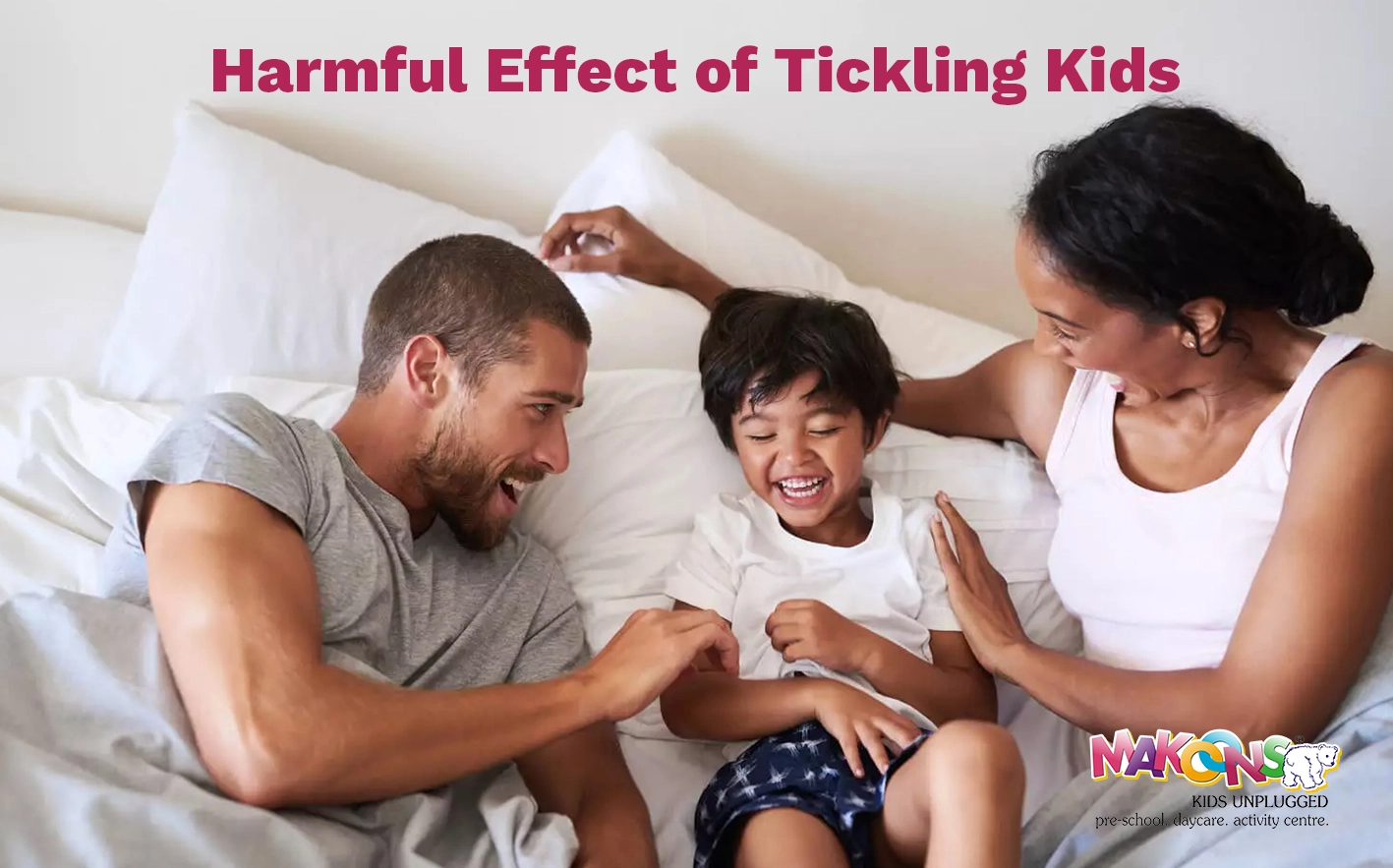Often parents or other family members tickle children to interact with them. These laughter and laughter seem obvious indicators of enjoyment, but is tickling always harmless fun? This blog digs into the physical and psychological effects of tickling on children, helping parents to get a better understanding of this popular interaction.
The Neuroscience of Tickling: Pleasure or Threat
Tickling causes complex reactions in the body. When a person is tickled, the brain is touched by both pleasant and perhaps threatening things. This depicts why children laugh and try to flee at the same time. This contradictory response occurs because:
- Tickling activates nerve endings beneath the skin
- The brain processes this stimulation as positive and negative
- This triggers an uncontrollable laughter reflex even when the feeling is not completely pleasant.
The laughter due to tickling is different from genuine laughter of happiness. It’s a reflex reaction that takes place even when the child may or may not be enjoying the tickling.
The Physical Effects of Tickling
Tickling itself rarely causes bodily damage to children. However, there are physical issues to be noted:
- At extremes, prolonged tickling has the potential of making it difficult to breathe, if the child is laughing for a longer period.
- When a child is tickled too rough or for a long time, their face can turn red and their heart rate might also speed up a little.
- The wiggling and squirming associated with tickling can inadvertently result in bumps or falls.
- Toddlers may not have the coordination to defend themselves if tickling gets too intense.
- Some children are susceptible to touch, and tickling can be too much for their sensory systems.
These physical symptoms are usually temporary and mild but are worth noting, particularly with toddlers or sensitive children. When tickling might have a harmful Psychological Impact
Anxiety and Trust Issues
For some kids, especially very ticklish kids, the anticipation of being tickled can be anxiety-producing. When tickling is threatened or used as punishment, or adults do not honor requests to stop, it can undermine trust between adults and children.
Lack of Control
When you tickle a child, they generally can’t very well stop the feeling even if they’d like to. This can bring on feelings of helplessness, especially if they tell you to stop and are ignored. The idea that you can’t manage your own body – it is pretty unsettling!
Loss of Bodily Autonomy
When adults continue tickling after a kid says “stop,” even though the kid is laughing, we may be actually teaching them that their boundaries aren’t important. This gives confusing messages about consent and authority over their own bodies.
Is Tickling Bad for Kids?
Whether tickling is harmful to children or not is not a simple yes or no. Actually, it varies depending on the motive and method of doing it, but above all, depending on how the child reacts.
Tickling can be positive and even enjoyable when:
- It’s child-initiated: If a child requests, in a playful way, to be tickled, it’s likely a play interaction for them.
- It’s gentle and short: Short bursts of light tickling are usually more pleasurable.
- The child is smiling and enjoying themselves: They appear relaxed and at ease, and their body posture is relaxed and not strained.
- The child is in control and can just stop it: They understand that they can say “stop” and you will instantly respect that. That feeling of being in control is important.
Tickling can be potentially bad or even harmful when:
- It’s unwanted or the child doesn’t want it: Tickling a resistant child, who is expressing “no” or trying to get away, can elicit feelings of helplessness, fear, and anxiety. Their laughter in these circumstances may be a conditioned response or an attempt to appease the adult.
- It’s forceful or relentless: Tickling that is forceful or relentless is physically uncomfortable or even painful. It can also bring about breathlessness or feelings of being under siege.
- The child’s stop cues are disregarded: This does not honor the child’s boundaries and tells the child that their voice will not be heard. This will have negative psychological consequences in the long run.
- It’s used to elicit a reaction rather than shared amusement: If all you want is to make the child laugh, even if he’s in distress, it’s more about your pleasure than the child’s welfare.
Conclusion
Tickling is not bad for kids, but the way we go about it is everything. If we respect the child’s boundaries and comfort level, then tickling is a wonderful way to have fun and bond with each other. But when boundaries are not respected, it teaches unhealthy lessons about consent and power.
By being mindful of when and how we tickle children, we can understand the tickling effects on kids helps us determine when tickling is bad for kids and how to ensure it remains a positive experience.
Also have a look on our Another blog on – Nutritious Food for Baby, While Traveling – A Parents Guide
Remember that every child is different. Some like being tickled, and others will become uncomfortable or upset. Respecting their limits and paying attention to the unique tastes of your child is the secret to keeping tickling fun and safe.

